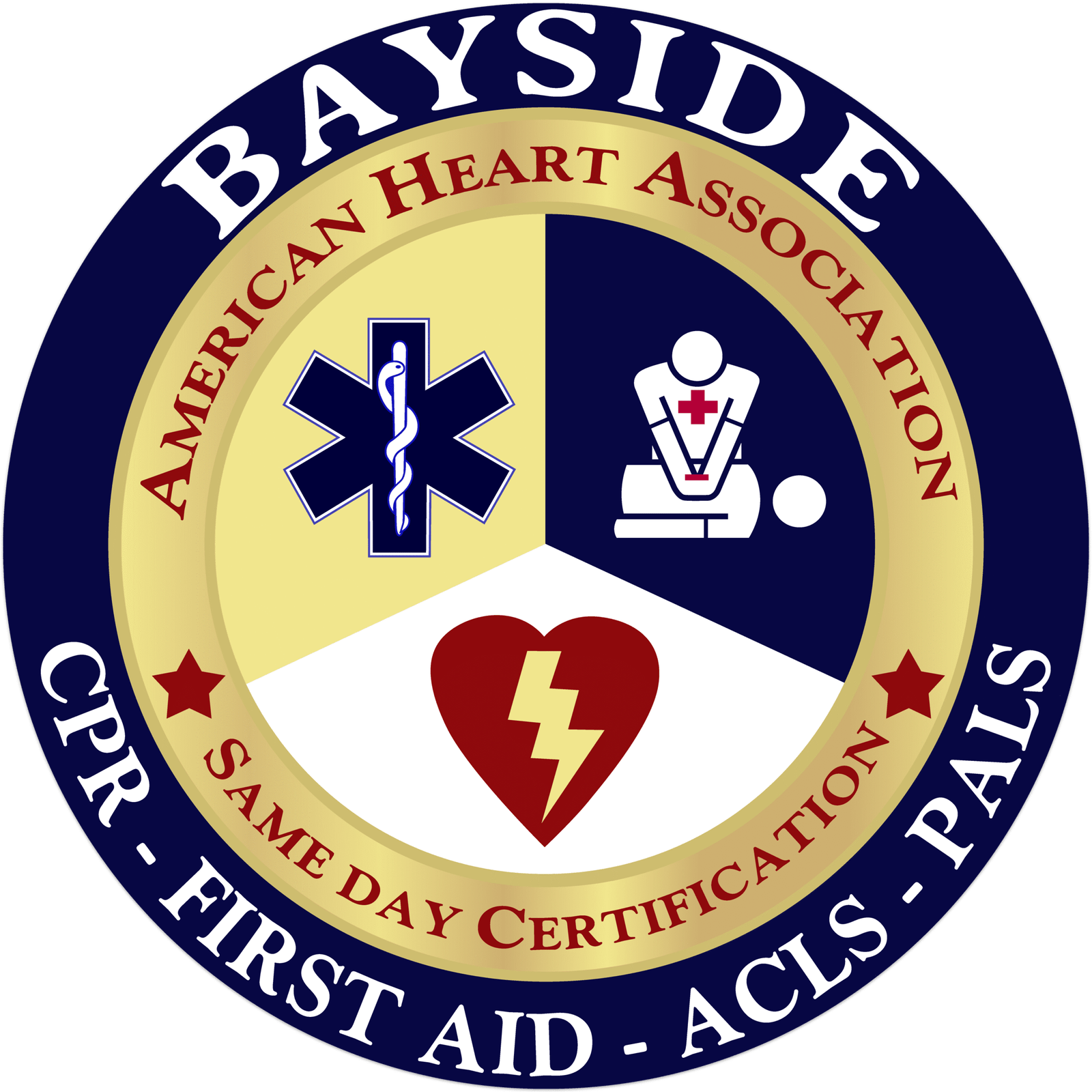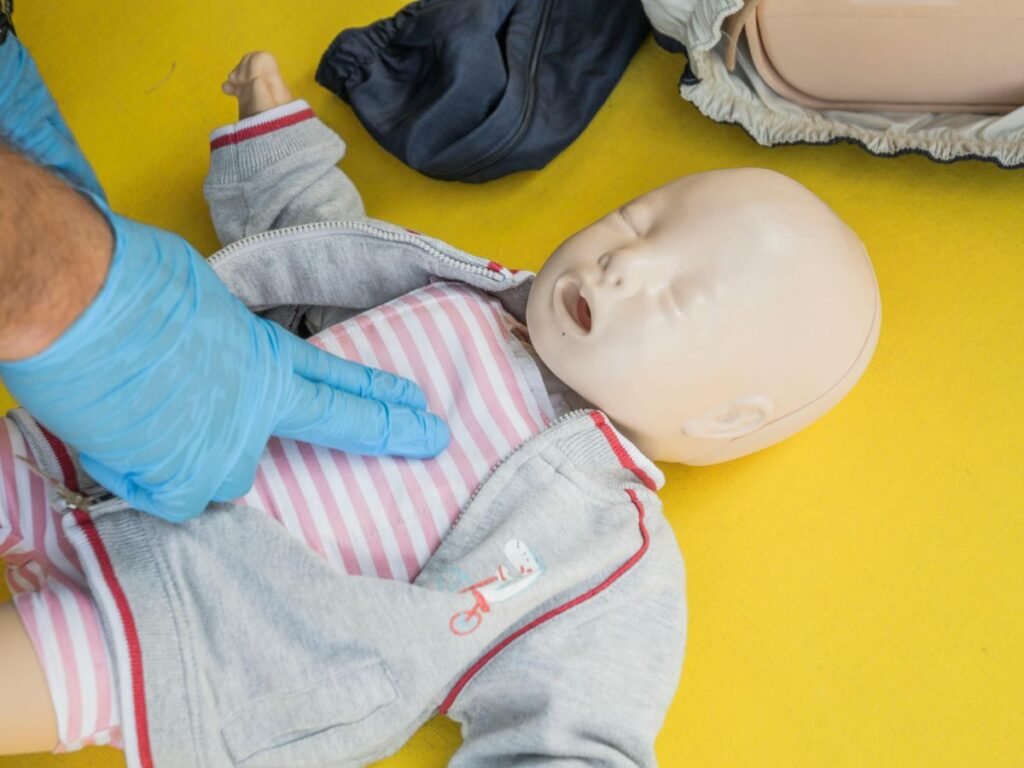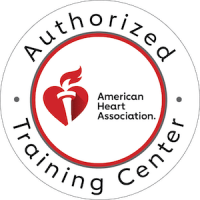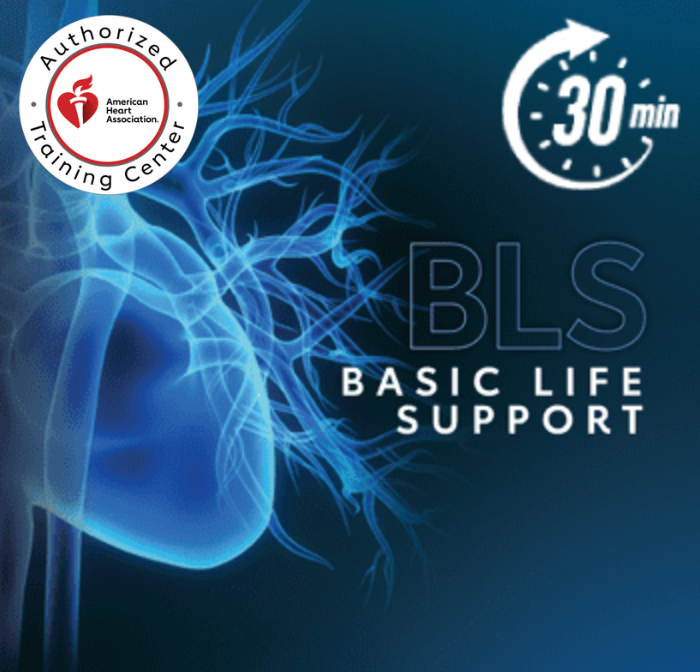
Pediatric BLS Algorithm
Every second counts when a child’s life is on the line. If your child suddenly collapses at school, playground, or home and there are no hospitals nearby. Would you know how to respond in those critical moments? This is where the Pediatric Basic Life Support (BLS) Algorithm becomes more than just a medical procedure—it becomes a lifesaving intervention.
Pediatric BLS is a systematic, evidence-based approach for managing life-threatening emergencies in infants and children. A prompt and effective response can bridge the gap between collapse and advanced medical care, significantly increasing the chances of survival.
Whether you’re a healthcare provider, teacher, parent, or someone who simply wants to be prepared, this guide walks you through every step of the BLS algorithm. You’ll learn how to respond as a single rescuer or in a team-based scenario, use an AED safely, and avoid common mistakes under pressure. Ready to step up in a moment of crisis? Let’s break down the Pediatric BLS Algorithm step by step.


Understanding the Pediatric BLS Algorithm
It’s all about the basics before diving into compressions and AED pads. The Pediatric BLS Algorithm starts with scene safety, because you can’t help if you become a victim yourself. Once the scene is secure, check for responsiveness by gently tapping and shouting. No response? It’s time to start. Next, shout for help and activate the emergency response system. If you’re alone, perform two minutes of CPR before calling 911. If others are around, delegate someone to contact help and grab an AED immediately.
Then, check breathing and pulse. For infants, use the brachial pulse; for children, use the carotid or femoral. If there’s no pulse (or if it’s under 60 bpm with poor perfusion), start high-quality CPR. If the child is not breathing normally but has a pulse, give rescue breaths every 2–3 seconds. According to the guidelines published by the American Heart Association, the recommended compression-to-ventilation ratio for pediatric CPR is 30:2 for single rescuers and 15:2 for two-rescuer scenarios, ensuring adequate perfusion and oxygenation.
The pediatric BLS algorithm for healthcare providers is a step-by-step process where each step builds the foundation for effective pediatric or neonatal resuscitation, and understanding how these steps play out in real-time scenarios is crucial for successful intervention.

Single Rescuer Scenarios
When you’re the only person available during a pediatric cardiac emergency, doing the right thing and doing it quickly can mean the difference between life and death. The single-rescuer BLS approach equips individuals with a structured, step-by-step response, even in high-pressure situations.
Responding solo can be overwhelming, but the steps are clear:
- Ensure scene safety
- Check for responsiveness
- Call for help and retrieve an AED if available
- Check breathing and pulse (≤10 seconds)
-
Start CPR immediately if:
-No pulse
-Abnormal breathing and poor perfusion
CPR Guidelines for Single Rescuers:
-
Infants (under 1 year): 30 compressions to 2 breaths using two fingers on the chest
Children (1 year to puberty): 30:2 ratio using the heel of one or both hands - Compression rate: 100–120/min
-
Compression depth:
-1.5 inches (4 cm) for infants
-2 inches (5 cm) for children
Use an AED as soon as it’s available and follow the audio/visual prompts.
Two-Rescuer Scenario
In many real-world settings, two rescuers are available to respond to a child in distress. This scenario allows for more effective coordination and higher-quality CPR, improving the child’s chance of survival.
In a team-based response, coordination is everything:
- Rescuer 1 performs chest compressions, and Rescuer 2 delivers rescue breaths.
- Switch to a 15:2 compression-to-breath ratio.
- One team member should prepare and apply the AED while compressions continue.
- Rotate roles every 2 minutes to maintain CPR quality and reduce fatigue.
Clear communication and seamless role-swapping are crucial. Practicing these dynamics in training can make your real-world response fast and effective.
Proper Use of AEDs in Pediatric Emergencies
Many people think AEDs are only for adults. This is not true! They are meant to save lives, including those of children.
Guidelines for AED Use in Children:
- Under 8 years old or weighing <55 lbs (25 kg): Use pediatric AED pads if available.
-
Pad placement:
-One pad in the center of the chest (anterior)
-One pad on the center of the back (posterior) - If pediatric pads are unavailable, use adult pads — it’s better to act than delay.
- Most AEDs auto-adjust shock energy when pediatric pads are detected.
Can’t find pediatric pads? Use adult ones. It’s better to use them than to wait or do nothing. The AED will walk you through every step. Just turn it on and listen.
Common Mistakes and How to Avoid Them
Even trained pros can make mistakes in the heat of the moment, but knowing what to watch out for can make a big difference.
Here are a few common missteps:
- Shallow or misaligned compressions
- Over-ventilation (breathing too fast or with too much force)
- Delaying CPR to wait for help
- Skipping role-switching during two-rescuer CPR
Pro Tips for Error-Free Response:
- Use feedback manikins during training to gauge depth, rate, and ventilation.
- Run real-world simulation drills regularly.
- Stay updated with AHA guidelines and complete recertification as needed.
So how do you keep things sharp?
Practice. A lot. The more you rehearse, the more second-nature it becomes. Use manikins that give feedback, run through real-life scenarios, and update your skills regularly. Confidence comes from muscle memory.
Conclusion
No one ever wants to imagine themselves in a situation where a child’s life hangs in the balance, but emergencies don’t wait for readiness. By familiarizing yourself with the Pediatric BLS Algorithm, you prepare to be explicit, confident, and speedy in your response, including assessing for responsiveness, administering CPR, and using an AED when every moment matters. If you’re a healthcare provider, parent, or simply someone who wants to be prepared, having this knowledge means you’re not standing by; you’re stepping up when it counts. Additionally, understand the pediatric chain of survival, a lifesaving guide for children’s emergencies.
You don’t have to be a professional to know life-saving techniques; anyone can be the first link in a chain of survival that helps a child survive. Learning or renewing your BLS skills can be the difference you need in a critical moment. If you’re looking for a trusted place to build that confidence, Bayside CPR offers BLS course to help you stay sharp and aligned with the latest American Heart Association (AHA) guidelines.
Frequently Asked Questions
What is the correct sequence for pediatric BLS?
The correct sequence for Pediatric Basic Life Support (BLS) follows the CAB approach: Circulation, Airway, Breathing. Begin with chest compressions to maintain blood flow, then open the airway and deliver rescue breaths. Follow AHA guidelines and use a 30:2 compression-to-breath ratio for a single rescuer and 15:2 for two rescuers.
How to perform CPR on a choking child?
If a choking child becomes unresponsive, start CPR right away without checking the mouth first. Begin with chest compressions to attempt to dislodge the object. After each set, open the airway, check for a visible object, and remove it only if you can see it clearly. Then, give 2 rescue breaths and continue CPR.
Why 15 compressions and 2 breaths in children?
In two-rescuer pediatric CPR, the 15:2 ratio allows for more frequent rescue breaths, which is essential since most pediatric cardiac arrests stem from respiratory failure. This higher ventilation rate supports oxygenation while maintaining effective compressions.
What is the sniffing position for a child?
The sniffing position helps open a child’s airway by slightly tilting the head back and lifting the chin—mimicking the act of “sniffing the air.” This alignment improves airflow and makes rescue breathing more effective during CPR.
How to open up a child's airway?
Use the head tilt–chin lift technique for children without suspected trauma: tilt the head back and lift the chin. If spinal injury is suspected, perform a jaw-thrust maneuver instead to open the airway without moving the neck.



